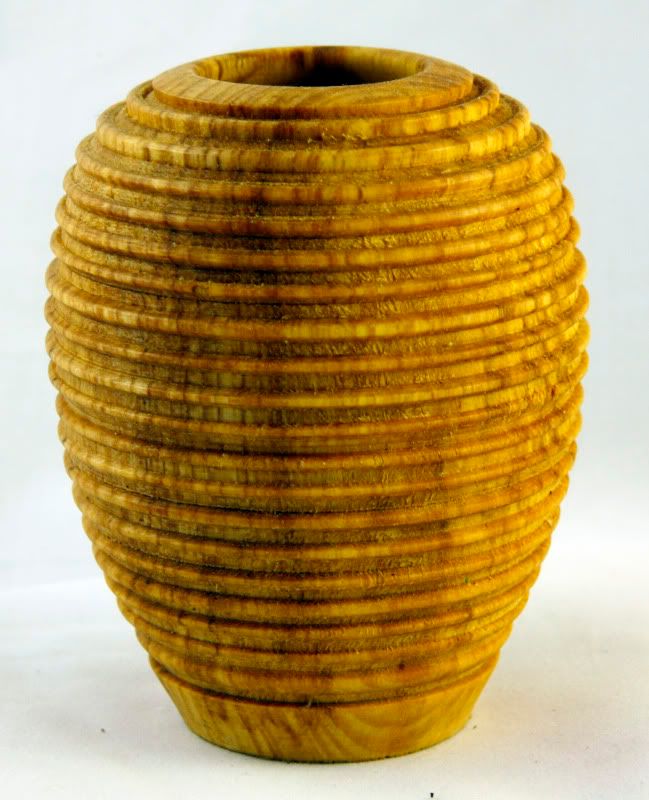Gitface
Established Member
Hi All
I've been having a bit of experimental phase, trying new things and shapes. Also been waiting for my light tent to show up so these are the first picture with it (need to get lighting and white balance right yet)
I call this the Beehive.

The wood is Scyamore with some spalting.
This is my second attempt at a hollow form and overall I'm happy with how it turned out. It stands just over 4" high by 3" wide with the hole at 1 3/8".
I was a bit disappointed with the ribs as I couldn't get a smooth finish in between, not sure if it was the wood or technique. I used my thin parting tool to cut the grooves then rounded the top.
The picture tends to show this more than in the flesh.
Thanks,
Mark...........
I've been having a bit of experimental phase, trying new things and shapes. Also been waiting for my light tent to show up so these are the first picture with it (need to get lighting and white balance right yet)
I call this the Beehive.

The wood is Scyamore with some spalting.
This is my second attempt at a hollow form and overall I'm happy with how it turned out. It stands just over 4" high by 3" wide with the hole at 1 3/8".
I was a bit disappointed with the ribs as I couldn't get a smooth finish in between, not sure if it was the wood or technique. I used my thin parting tool to cut the grooves then rounded the top.
The picture tends to show this more than in the flesh.
Thanks,
Mark...........




